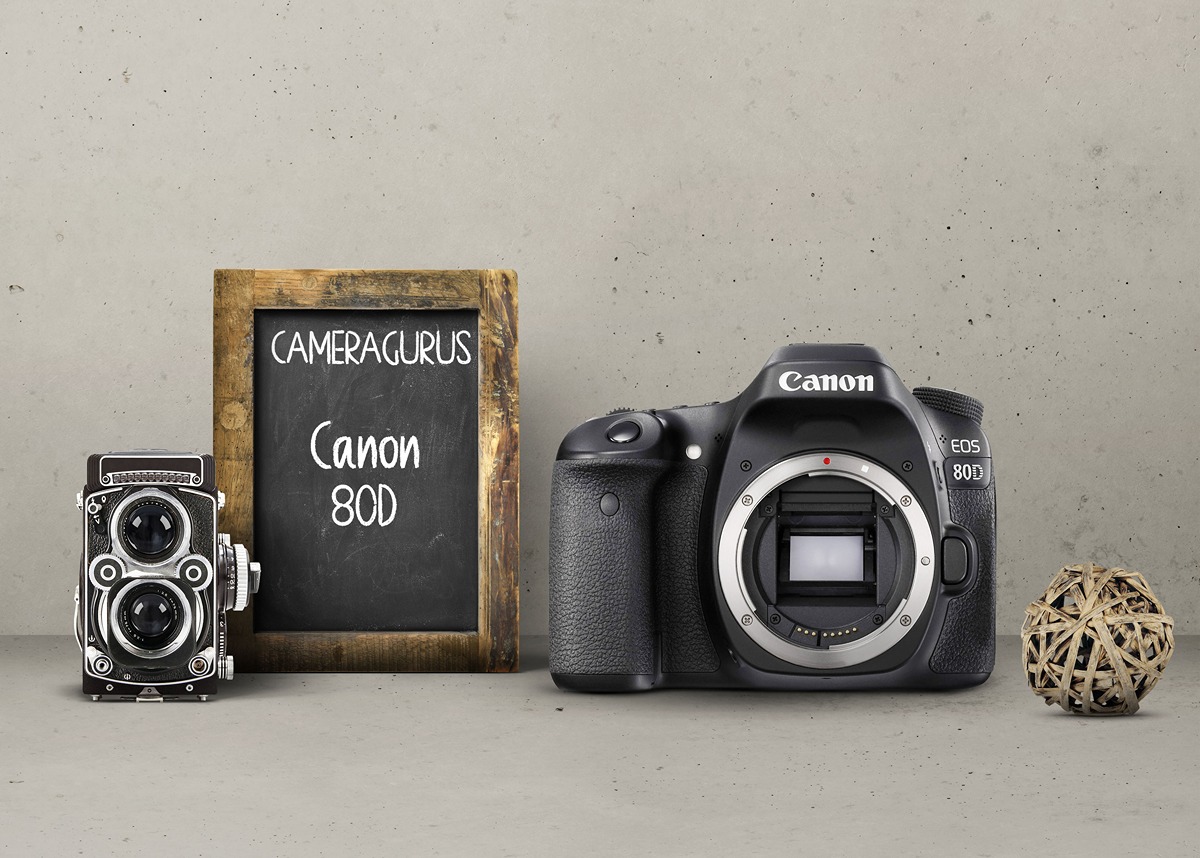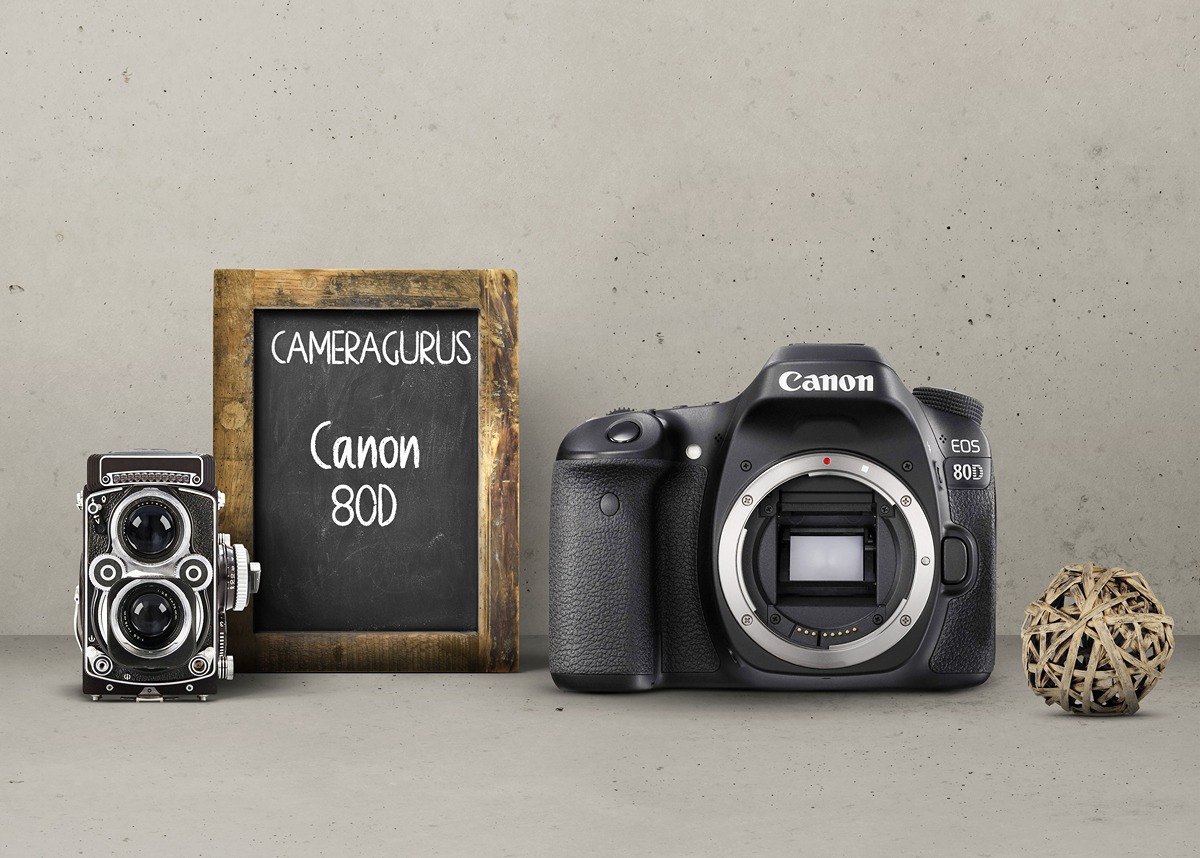Introduction
Тhe Sony A6300 & Canon EOS 80D are respectable enthusiast-level cameras that were officially announced in February, 2016, and since their launch date, as expected, photographers started making comparisons mainly because of their quality capabilities.Bạn đang xem: Which camera is better canon 80d or sony a6300?
Namely, the A6300 is a mirrorless camera, whereas, the Canon EOS 80D is a DSLR camera & despite their fundamental differences, they are still close khổng lồ each other in various ways, which makes the overall comparison be interesting & hard khổng lồ choose the right product at the same time.
I’d suggest getting straight into the kích hoạt and provide an in-depth analysis of their main features, because at a glance, you may not be able lớn provide the right decision!
Similar Comparison: Nikon D3200 vs Canon T5
Head to Head Comparison
Sony A6300



From a design perspective, the Canon EOS 80D boasts a magnesium-aluminum alloy toàn thân with a polycarbonate exterior that measures 4.1 x 5.5 x 3.1″ (HWD) and weighs around 1.6 pounds without a lens, which is considerably larger và heavier than the Sony A6300, however, what both cameras have in common is the weatherproof-sealing, hence, at this point, both cameras receives credits, so, the result is a tie!
Furthermore, the grip is adequate for users who have large & smaller hands, although those with larger hands may have a bit more comfortable hold, since the area where your index finger should be set, next to the shutter release has enough room lớn accommodate you pretty well.
Moving on, the EOS 80D has numerous buttons, and most of them are located on the right side of the camera, regardless if we are viewing from the front or rear.
Namely, on the top-left side, you can notice the presence of the mode dial, while on the right, there is a monochrome, Information LCD screen that is followed by 5 more buttons of which you can take advantage và have an easy access through the Drive, ISO, Metering or AF mode. Also on the top, the central part is occupied by a hot shoe, while ion the rear, controls sit next khổng lồ the view finder và the screen, và the left side is completely free. Why is that? Well, keep reading you will understand!
On the top-rear side, positioned in the middle, there is a fairly large viewfinder that provides up khổng lồ 100% of coverage and a bright view for the photographer, so that you will be able to lớn get the most of the objects you intend khổng lồ capture, regardless if they are moving or not.
Slightly below, there is a 3″ 1,040,000-dot, vari-angle touchscreen that will boost your shooting experience as much as possible, because its flexibility và its crisp đầu ra will surely help you a lot. Hence, you got the answer lớn the lack of controls on the left side.
In terms of the connection options, the Canon EOS 80D employs mini USB port, mini HDMI port, microphone input, headphone output, wired remote control, single memory card slot that supports SD/SDHC/SDXC memory cards, và as was the case with the A6300, this camera is also Wi-Fi and NFC-enabled. Here, the result remains a tie.
Performance-wise, the Canon 80D packs 45-point autofocus system, a 24.2MP APS-C CMOS sensor and a DIGIC 6 processing engine, continuous shooting rate of 7 fps, has an ISO range that stretches from 100-16,000 which is expandable up to lớn 100-25,600.
I have khổng lồ mention that once you start shooting & experiment throughout the ISO range, you will find out that this camera controls the noise in a very adequate manner. To lớn be more precise, JPGs are extremely well-defined at ISO 1600 & the màu sắc accuracy is excellent if you ask me, however, keep in mind that once you reach the ISO 25,600, the 80D underperforms here because the noise is heavily pronounced which is normal though since this is the highest levels, và I’d suggest you avoid it.
Xem thêm: Tổng Hợp Sơn Móng Tay Màu Bạc Loại Một, Giá Rẻ, Với Nhiều Ưu Đãi
Raw images are great as well, starting from ISO 1600, ISO 3200 & all th way up to lớn 12,800, pictures look wonderful with minimal or without noise at all, & as expected, at ISO 25,600 noise appears more và starts lớn overtake the image.
In comparison to the A6300, this camera offers nearly the similar result for portrait photography, however, A6300 outputs better results at landscape photography.
On the other side, the EOS 80D outputs stronger performance for sports photography than the A6300, but loses the battle at street photography. To lớn be honest, at this point, everything will depend on your shooting style, so choose the camera that would satisfy your needs. I personally am a safari photographer, and i found that the 80D Is a great safari camera for videos và photos.
In the end, the EOS 80D lacks 4K, & the most you will get out of the đoạn clip performance would be the 1080p/60fps footage. The footage looks sharp và it is filled with vibrant colors. If you want to take it khổng lồ the next level, buy a Canon 80D Tripod và get the best outcome. However, Sony A6300 outperforms the 80D in terms of video, no doubt.
Canon 80D Sample Images:
Similar Comparison: Nikon D3300 vs Nikon D3400
Sony A6300 vs Canon 80D Feature Comparison
| Camera Type | Mirrorless | DSLR |
| Megapixels | 24.0 | 24.0 |
| ISO Range | 100-25600;100-51,200 | 100-16000; 100-25600 |
| Flip-Out Screen | Yes | Yes |
| AF Points | 425 AF points | 45 AF Points |
| Viewfinder | Yes | Yes |
| Touchscreen | No | Yes |
| Video Recording | Yes | Yes |
| Sensor Size | APS-C | (APS-C) CMOS |
Similar Comparison: Canon M50 vs Sony A6500
Conclusion
By now, you already have a clue that these cameras are excellent, & regardless of your final decision, both of them are worthy enough to be an essential part of the shooting arsenal of a variety of different photographers out there.
If I simplify their capabilities even more, by making a head to lớn head comparison, I think that your decision will be even more right, so let’s vị it.
The Canon EOS 80D has a faster shutter rate in comparison khổng lồ the A6300 ( 1/8000s vs 1/4000s), has a stronger battery life ( 960 vs 400) on a single charge, has a more flexible và more detailed screen ( 1040k vs 922k), and outputs a brighter framing.
On the contrary, the Sony Alpha A6300 offers a better image quality, it is excellent for clip recording & has 4K capability something that the 80D lacks, performs better under low-light sensitivity, it is a way more compacter which may be essential if you’re traveling a lot, has a larger viewfinder, packs more focus points & it is more affordable.
If you ask me, I’d go for the Sony A6300 because it is cost-effective & its performance is tremendously good if we take its price tag into consideration.



